Abstract
A prospective study was carried out to analyse all X-rays requested from the three accident and emergency departments in Sheffield during one week. There were 3253 patients examined, of which 1028 (31.6%) were X-rayed, 1251 sets of X-rays being performed. Few X-rays (4.5%) were requested for medico-legal reasons. Skull X-rays were studied in particular detail. Only 5 (4.5%) of 112 films were subsequently reported as abnormal by the radiologist. The accident and emergency doctor's ability to predict X-ray outcome was not very good, their false positive rate being high at 21% while their false negative rate was low at 5.5%. This indicates that the accident and emergency doctors tended to be over cautious to compensate for their lack of experience.
Full text
PDF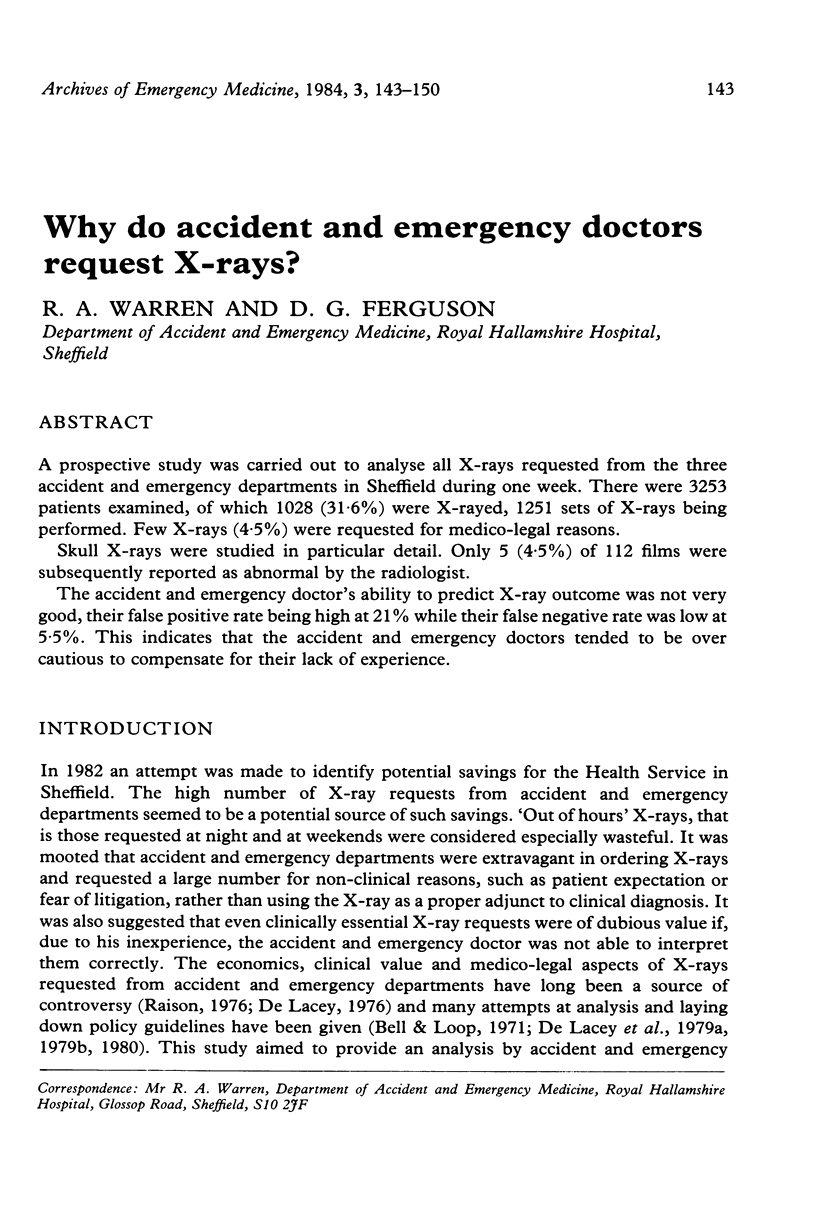
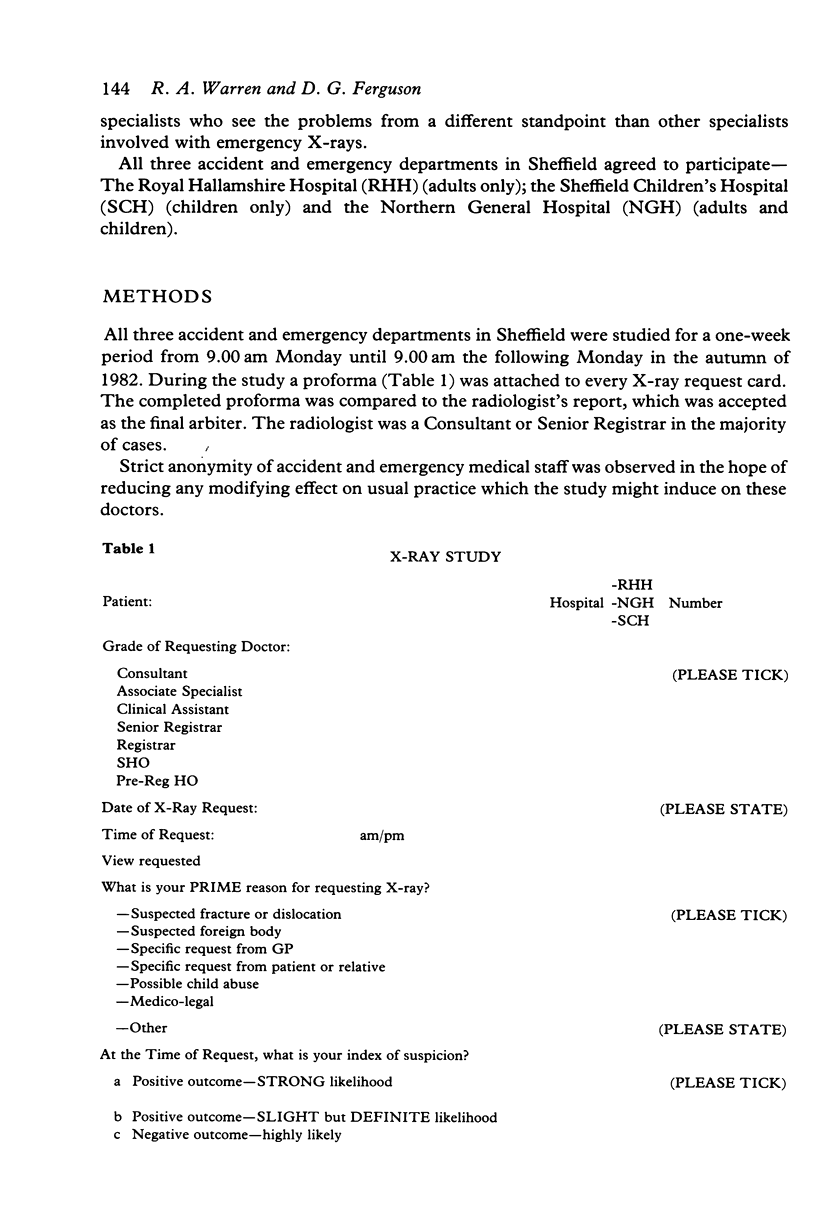
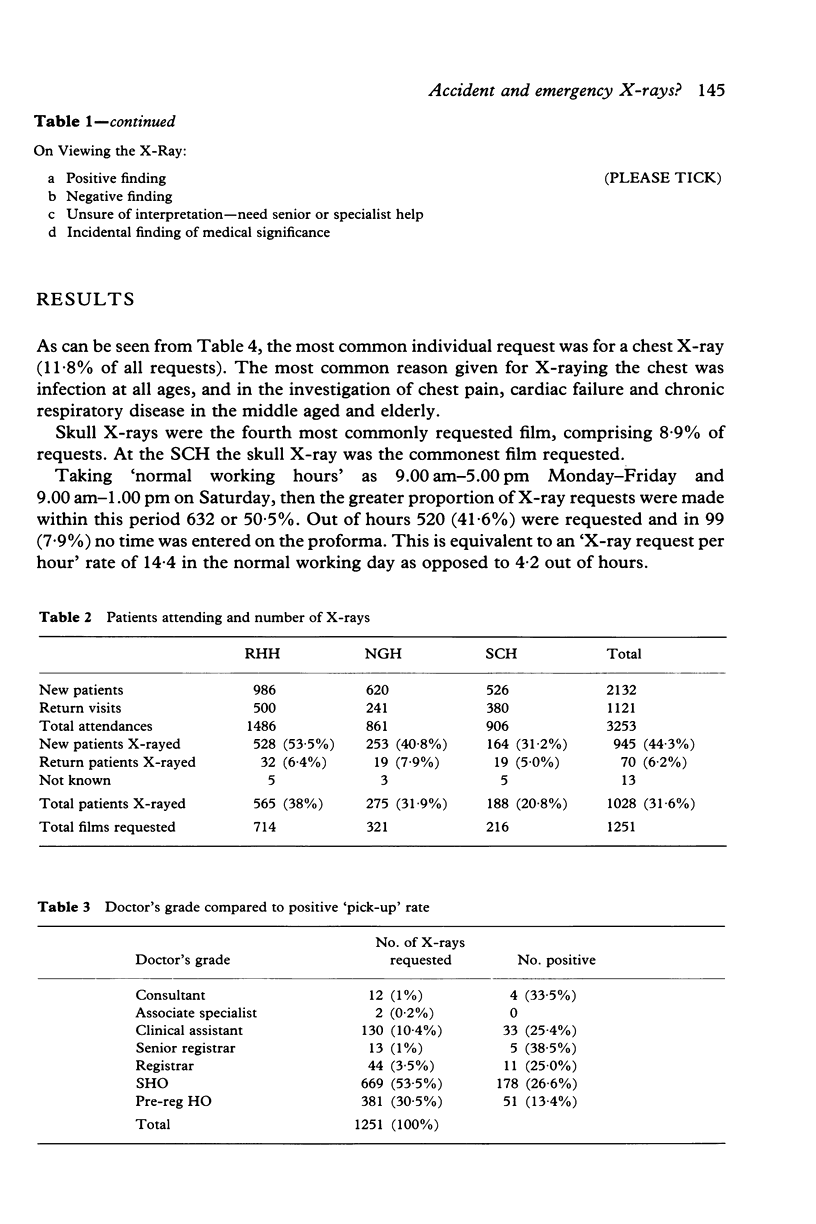
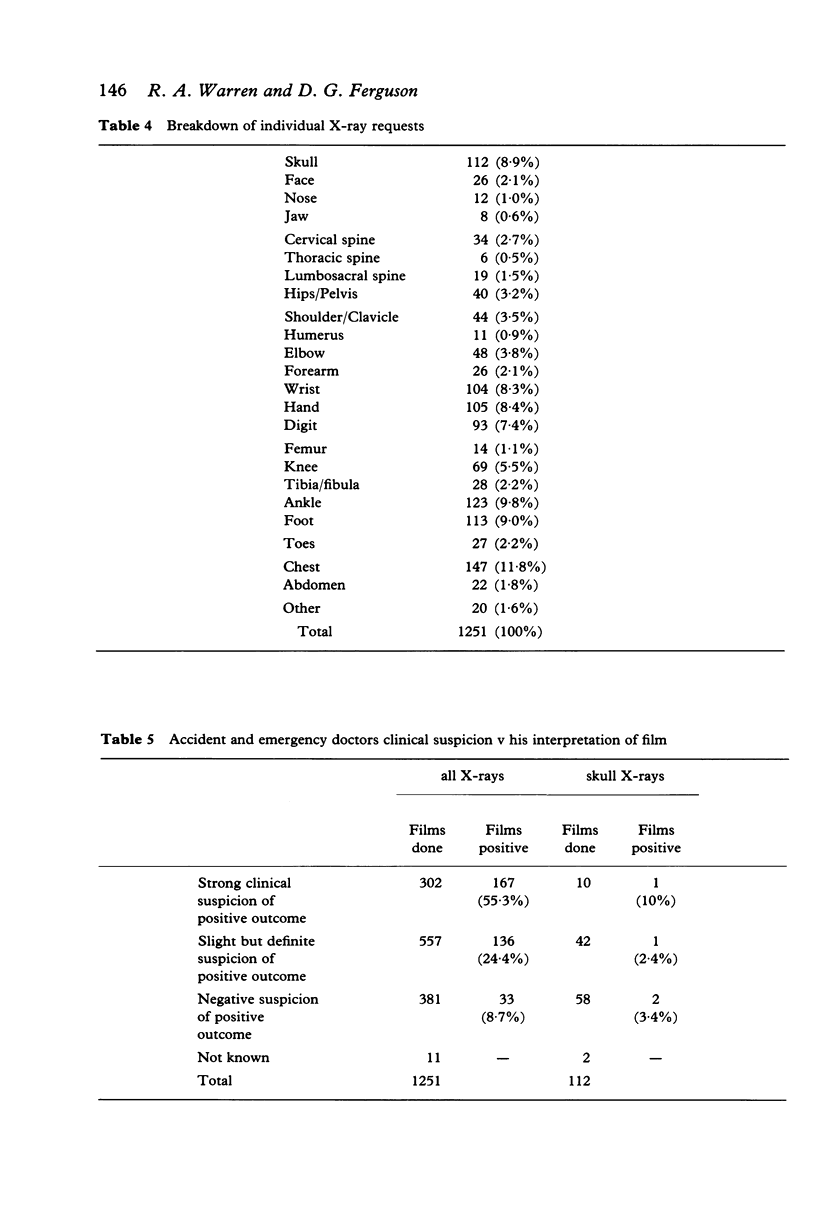
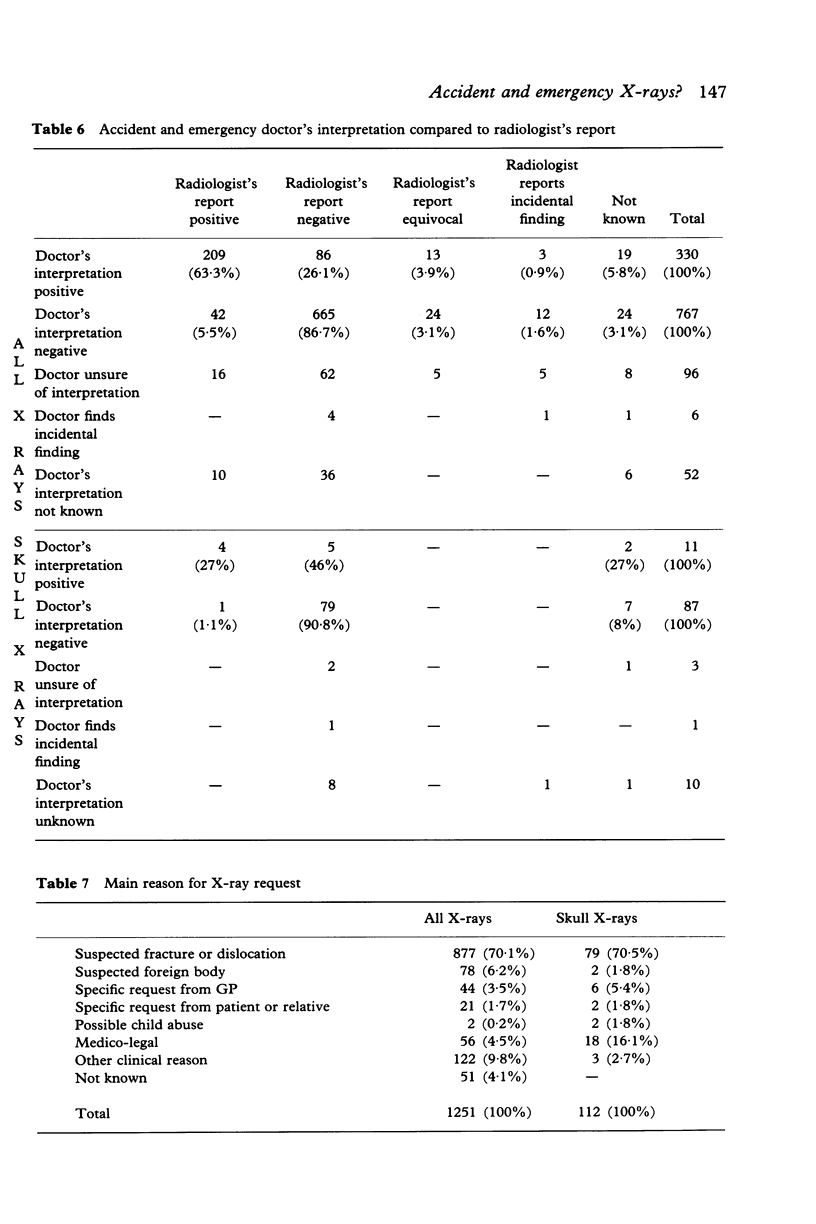
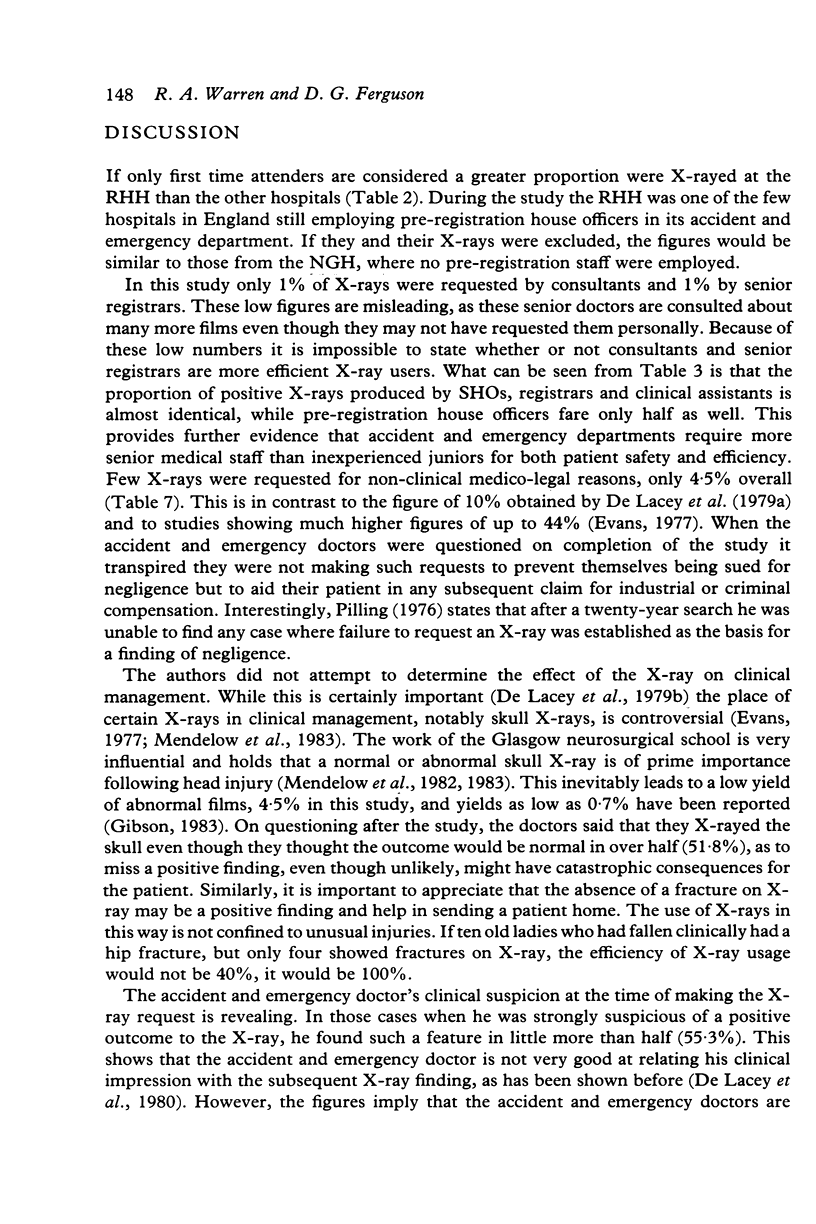


Selected References
These references are in PubMed. This may not be the complete list of references from this article.
- Evans K. T. The radiologist's dilemma. Br J Radiol. 1977 May;50(593):299–301. doi: 10.1259/0007-1285-50-593-299. [DOI] [PubMed] [Google Scholar]
- Gibson T. C. Skull X-rays in minor head injury. A review of their use and interpretation by casualty officers. Scott Med J. 1983 Apr;28(2):132–137. doi: 10.1177/003693308302800207. [DOI] [PubMed] [Google Scholar]
- Mendelow A. D., Campbell D. A., Jeffrey R. R., Miller J. D., Hessett C., Bryden J., Jennett B. Admission after mild head injury: benefits and costs. Br Med J (Clin Res Ed) 1982 Nov 27;285(6354):1530–1532. doi: 10.1136/bmj.285.6354.1530. [DOI] [PMC free article] [PubMed] [Google Scholar]
- Mendelow A. D., Teasdale G., Jennett B., Bryden J., Hessett C., Murray G. Risks of intracranial haematoma in head injured adults. Br Med J (Clin Res Ed) 1983 Oct 22;287(6400):1173–1176. doi: 10.1136/bmj.287.6400.1173. [DOI] [PMC free article] [PubMed] [Google Scholar]
- Pilling H. H. A Coroner's view of routine radiology. Proc R Soc Med. 1976 Oct;69(10):760–762. [PMC free article] [PubMed] [Google Scholar]
- Raison J. C. Medical and legal aspects of the increasing demand for diagnostic radiology. Radiological Resources. Proc R Soc Med. 1976 Oct;69(10):755–756. [PMC free article] [PubMed] [Google Scholar]
- de Lacey G., Barker A., Harper J., Wignall B. An assessment of the clinical effects of reporting accident and emergency radiographs. Br J Radiol. 1980 Apr;53(628):304–309. doi: 10.1259/0007-1285-53-628-304. [DOI] [PubMed] [Google Scholar]
- de Lacey G., Barker A., Wignall B., Reidy J., Harper J. Reasons for requesting radiographs in an accident department. Br Med J. 1979 Jun 16;1(6178):1595–1597. doi: 10.1136/bmj.1.6178.1595. [DOI] [PMC free article] [PubMed] [Google Scholar]
- de Lacey G., Bradbrooke S. Rationalising requests for x-ray examination of acute ankle injuries. Br Med J. 1979 Jun 16;1(6178):1597–1598. doi: 10.1136/bmj.1.6178.1597. [DOI] [PMC free article] [PubMed] [Google Scholar]
- de Lacey G. Clinical and economic aspects of the use of X-rays in the accident and emergency department. Proc R Soc Med. 1976 Oct;69(10):758–759. [PMC free article] [PubMed] [Google Scholar]


